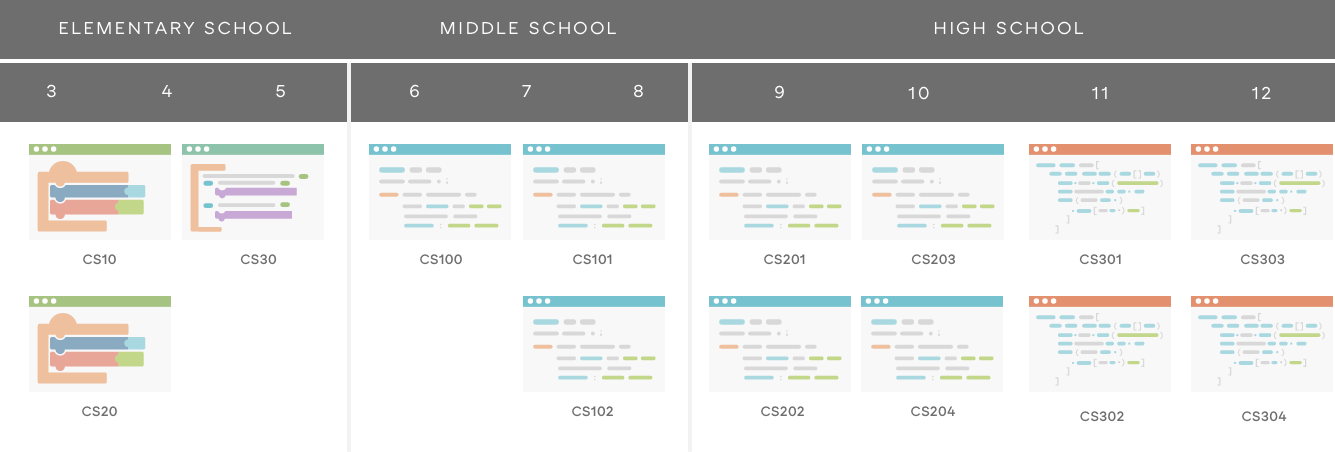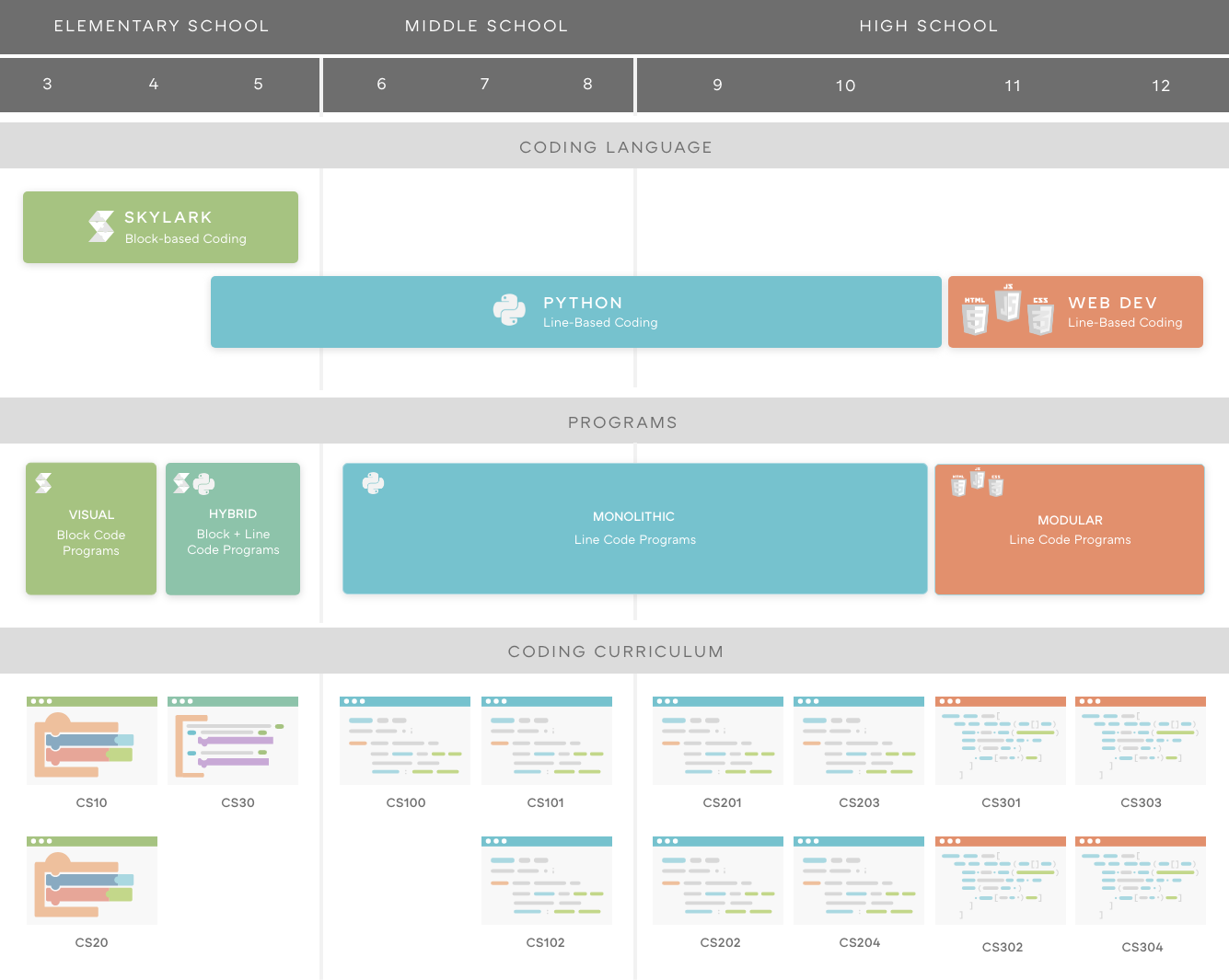Which approach is better for your students?

Typical computer science programs consist of a few standalone learning experiences without any designed progression or interconnection between them.
These programs often include:
- Online self-paced learning
- Sporadic or unstructured activities
- Treating computer science as a unit in another class
- After-school classes
- Robotics clubs
- Single computer science survey class
- Isolated AP Computer Science courses




Our curriculum pathway is a seamless sequence of rigorous courses, designed to be taught during the school day as a core subject from third through twelfth grade.
Our pathway combines fourteen computer science courses. Each course builds upon the last, contributing towards an overall set of standards-based outcomes in coding and computer science. Students are introduced to computer science fundamentals through the block-based Skylark language in elementary school. Those concepts and techniques spiral through the middle and high school curricula as students progress towards mastery of the professional line-based languages (including Python) and industry technologies (HTML, JavaScript, CSS) necessary to compete for jobs in the coding industry.






